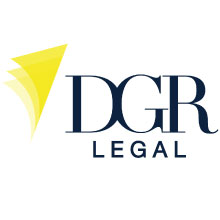By Michelle Cohen
If you are a fan of the HBO series, Game of Thrones, you are likely all too familiar with the tagline, “winter is coming”. Honestly, every Sunday when I watch the show and hear that line, a small part of me thinks about the fact that winter has been alive and well in my office all summer long. My desk sits directly below an air vent, and the cold air blows in my direction all day long. As my space heater tries to counter-balance the Nordic blasts, my fingers often turn various shades of blue and purple, and I drink so much hot tea that I run to the restroom a little too often.
I don’t know about you, but at my office there is an amusing “war” that plays out most days. Regardless of the season, someone is messing with the temperature, and making at least half the office unhappy. Previous attempts to encase the thermostat controls in Plexiglas with a lock and key proved to be unsuccessful. When my managing partner asked for a spare key, it also got complicated. Now, our controls are half-sheathed in Plexiglas with the locked half wide open—tempting every worker passing by to take a little stab at “fixing” the temperature. In our suite, most offices house private heaters AND fans, often running during the “opposite” time of year you would expect them to be used—heaters blasting all summer and fans blowing all winter. Does this at all sound familiar?
Unfortunately, research has shown that this is indeed very familiar to most of us. The “temperature wars” are always underway, but nobody ever seems to actually “win” them. According to numerous studies, at best, only one quarter of any workplace is satisfied with the regular, daily temperature control in their office. (I would like to meet these people who are so satisfied with their office temperature, and share how jealous I am of their comfort level.) Not surprisingly, temperature issues lead to wasted productivity (the range is between 6.4 minutes and 8.5 minutes per day), with people “adjusting” the temperature in their offices. This same source notes that 50% of offices are considered too hot in the summer, and 52% of offices are considered too cold in the winter. In other words, this really is a losing battle!
The constant “yo-yo” of hot and cold plays out day after day, and leaves us wondering why. Interestingly, there are many factors. First, it is well documented that men and women feel temperature differently. Men, as a rule, do not respond to the cold the way women do. It is also important to remember that it is easier to cool down the body than to warm it up. Taking those two pieces of information into consideration, you can see how problems quickly arise. If men do not feel the cold, but the office is freezing, women are more sensitive to cold and it is harder to warm up than cool down—we have the beginnings of a serious temperature war right there.
We also know that women deal with hormonal changes (e.g., menopause), which is a real temperature issue, and a tough one to address sensitively. Additionally, regional issues, such as employees originating from warmer or cooler climates, who have trouble adjusting to new temperatures, are at play. An article in The Washington Post in the summer of 2015 boiled (no pun intended) the whole debate down to the gender divide. I, on the other hand, argue that it is a combination of multiple factors, and the number one thing we can do to address the temperature wars is to treat one another more respectfully.
We have all heard the grunts. The sneers. The sidebar commentary when someone complains about the temperature. Younger people hear about hot flashes, older folks are told they need to put on more layers and co-workers secretly (or not so secretly) sigh and roll eyes at one another when someone attempts to discuss the issue of the weather inside the office.
We can do better, folks.
Bring the temperature issue to the forefront. Put it right on the agenda. Number ONE on the agenda. Revisit the issue regularly. This is a critical way to let your employees know that you are all in this together, that you hear them and that you are committed to try to solve the problem. Also, try modeling consideration for your team. Walk over to the dreaded thermostat and say, “I am thinking it is a little too (chilly, warm) in the suite, and would like to adjust this a couple of degrees. Any thoughts?” By being transparent, and not simply sneaking by and grabbing hold of the dial, you will have an easier time trying to start a healthy temperature dialogue.
Look, I know it is tough. Our jobs are hard enough, and this issue is a huge pain (especially if your managing partner likes the office arctic cold or desert hot). But money talks. Talk about the fact that productivity is lost when employees are too hot or too cold. You have lots of research on your side to illustrate that workers perform better when the thermostat is a few degrees higher than recommended for the comfort zone. In fact, there is a documented study on the correlation between typing mistakes and temperature! Take that to the meeting with the boss. Also, temperature issues can cause some employees to call in sick more often. They either are or feel ill, or just don’t want to deal with miserable work temperatures. Some employees report that their fingers feel stiff, while others feel exhausted and too tired because it is so warm. They find it impossible to focus on their work effectively.
So, what are we to do? Openly (and calmly and professionally) discuss the “elephant” in the office at a meeting. Try to err on the side of a few degrees warmer now that you know it is easier to cool down than to warm up. Also, make special arrangements, like personal heaters and fans. (FYI, my office provides the same for every person who asks.) Maybe a chat with maintenance is in order. Are the windows sealed correctly? Can you install film to the windows to block heat in the summertime? Do you need to review your lease or records for the air or heat unit maintenance? Sometimes filter and vent adjustments can help a lot more than we realize.
Try not to be snippy or allow others to belittle complaints about uncomfortable temperatures. It is easy to shout out, “throw a sweater on!”, but is that really making your environment a friendly and accessible one? Try to work together and entertain new ideas. Finally, try to remember that air temperature alone is only one factor. Radiant temperature, air velocity and humidity are all contributing factors to how temperature is perceived in the office suite, and should be addressed with a heating/air conditioning professional. Good luck, and in the spirit of these office-style “hunger games”—may the temperature odds be forever in your favor!
Michelle Cohen is the Director of Human Resources and Office Manager of Schneck Law Group LLC in Livingston, New Jersey.
Resources:





















